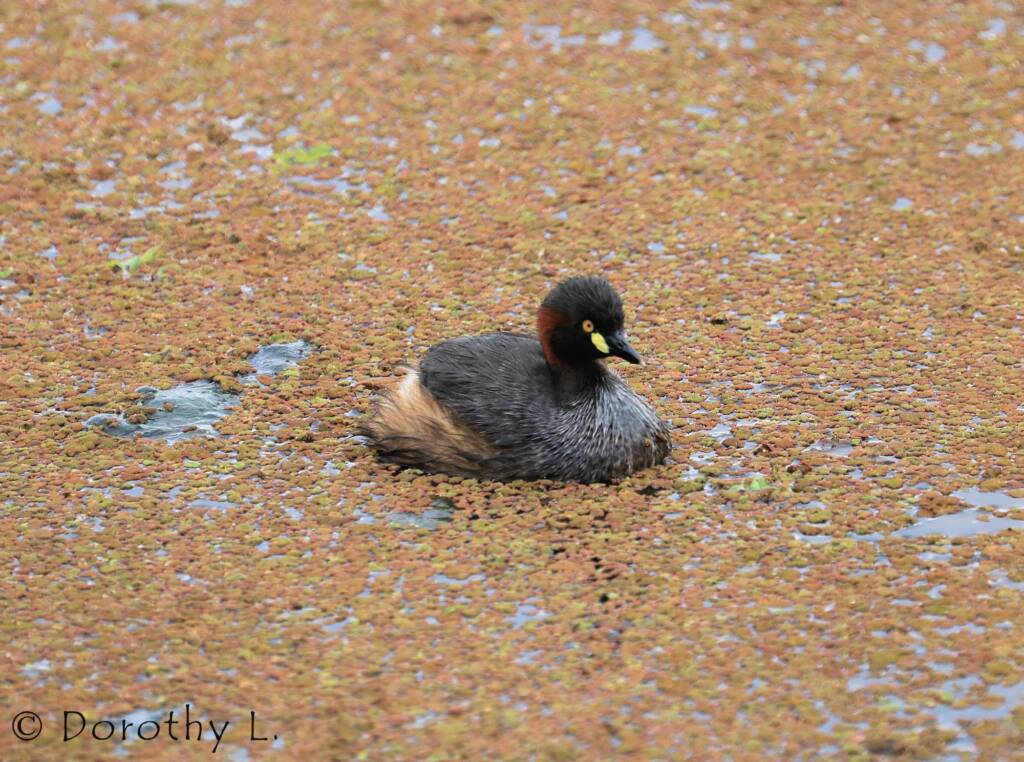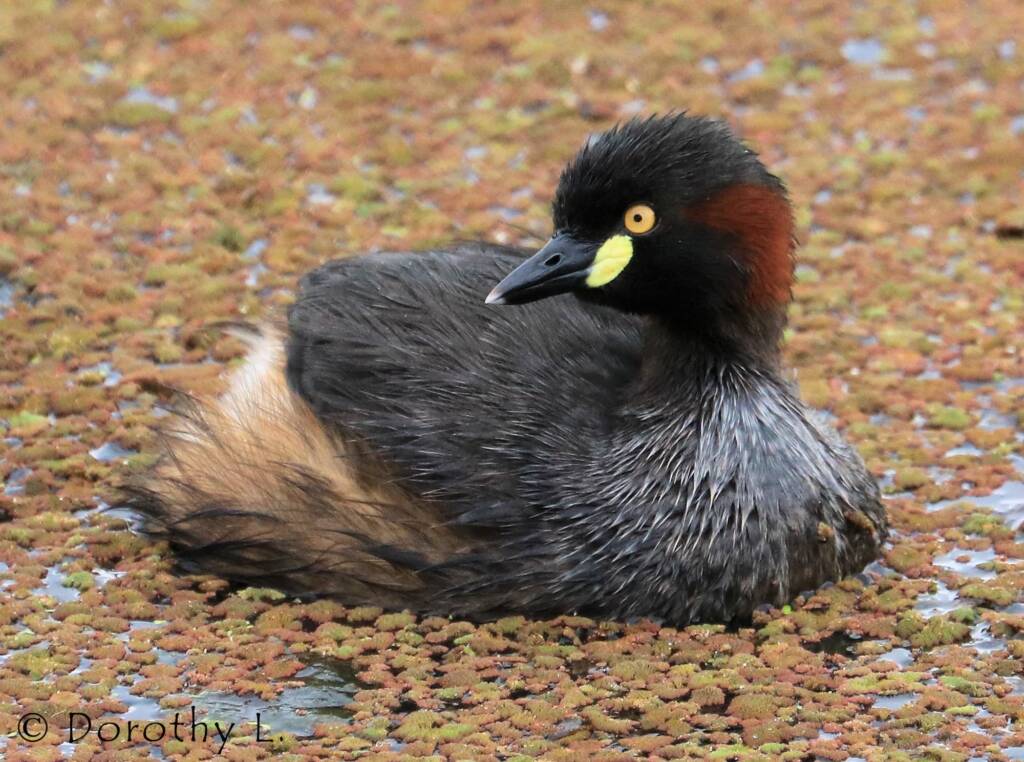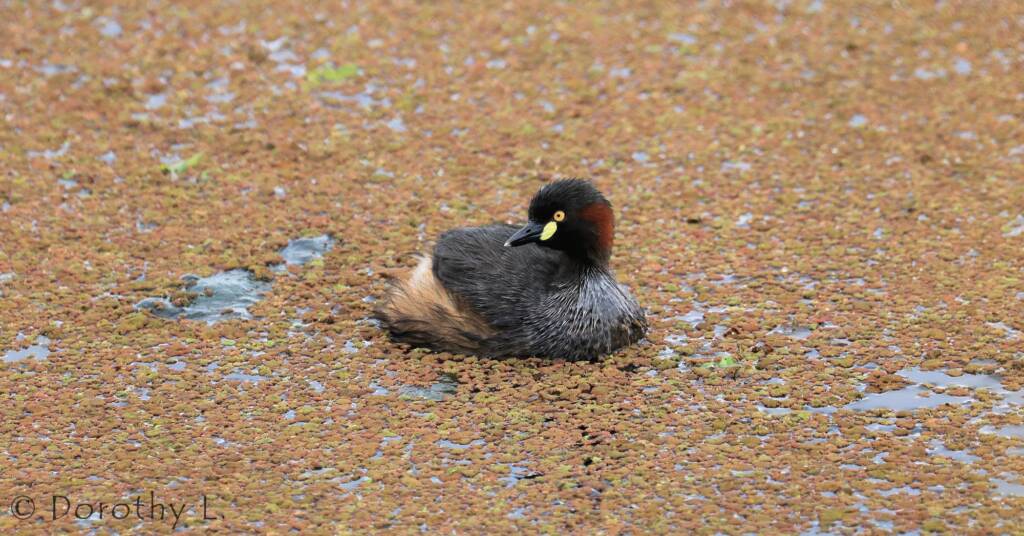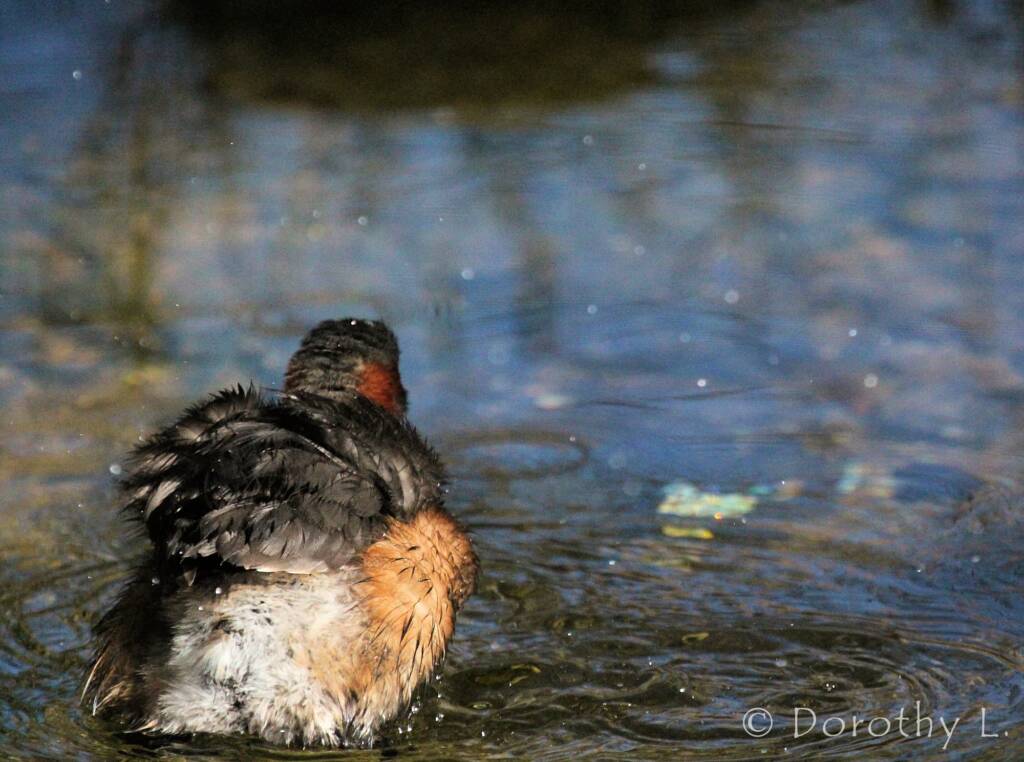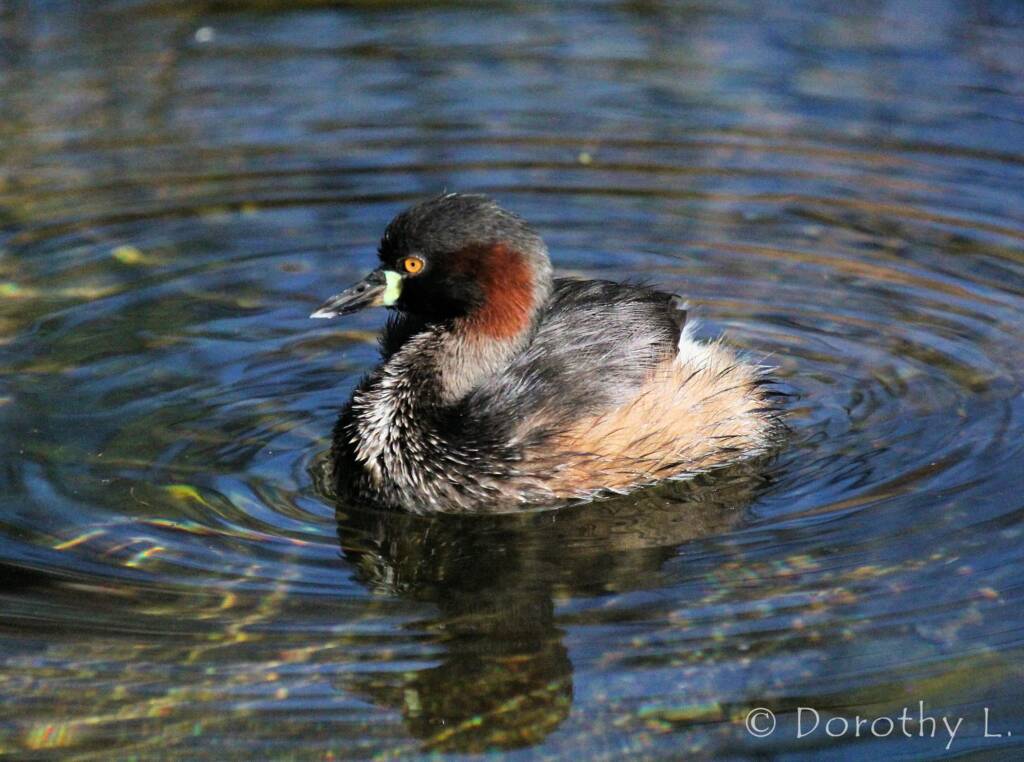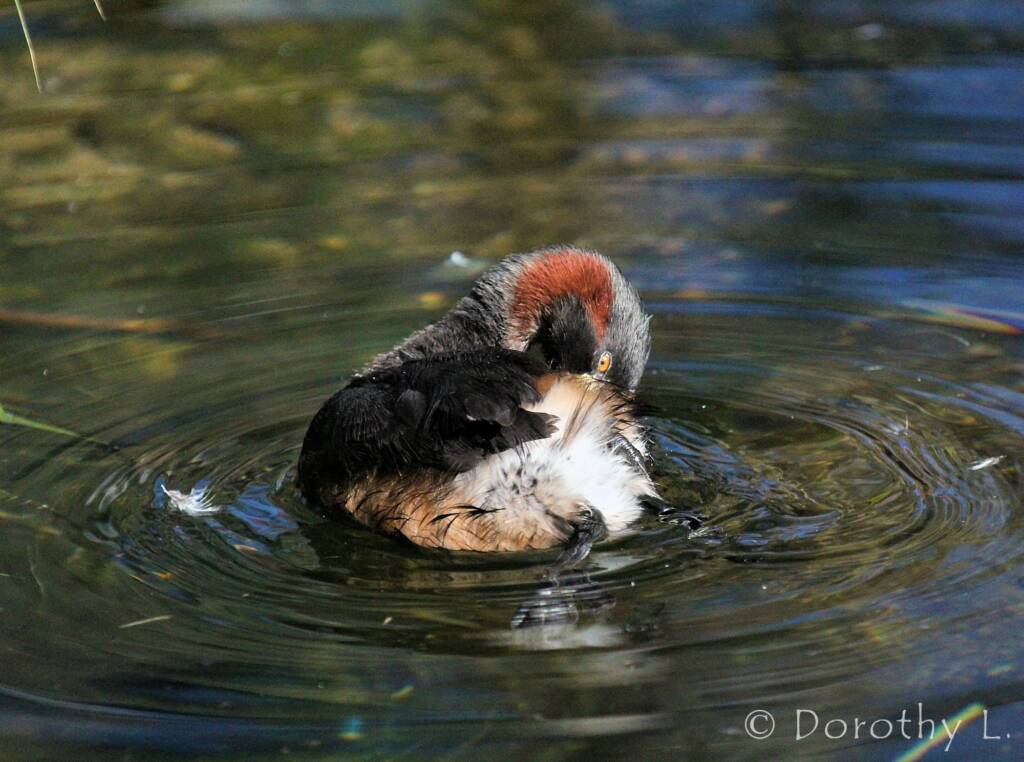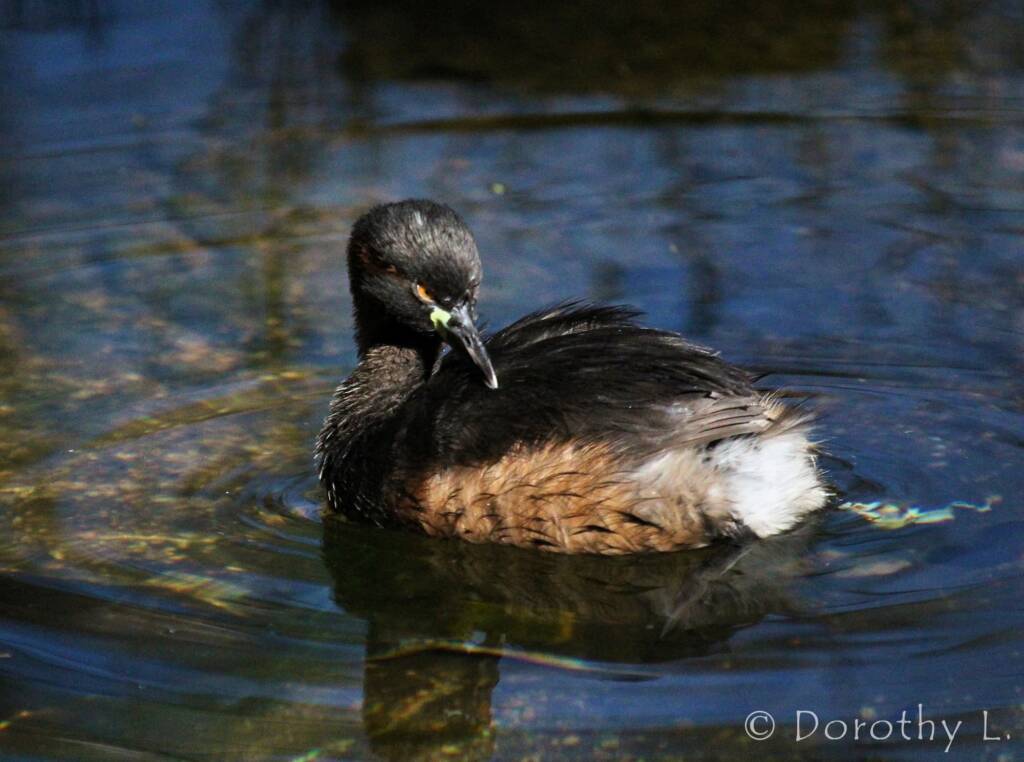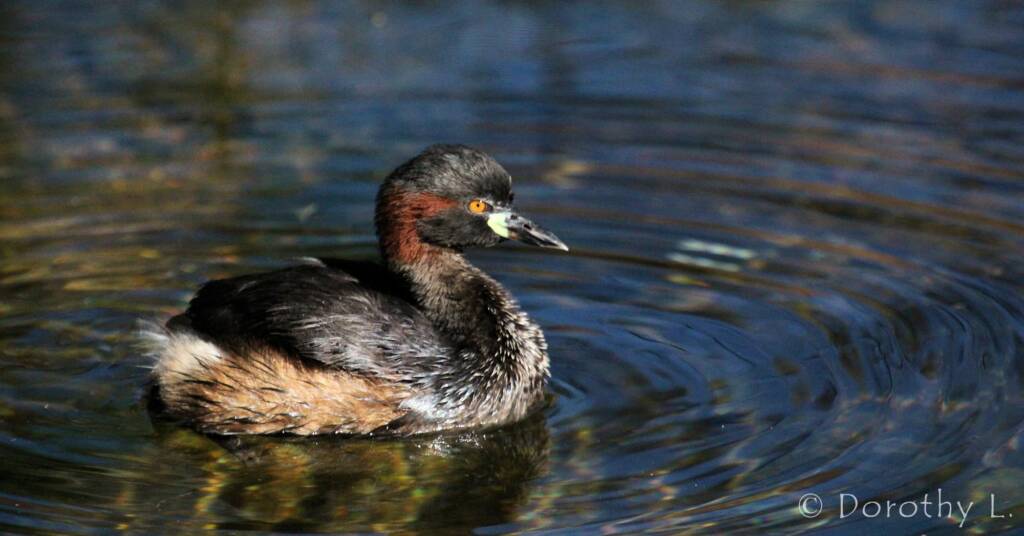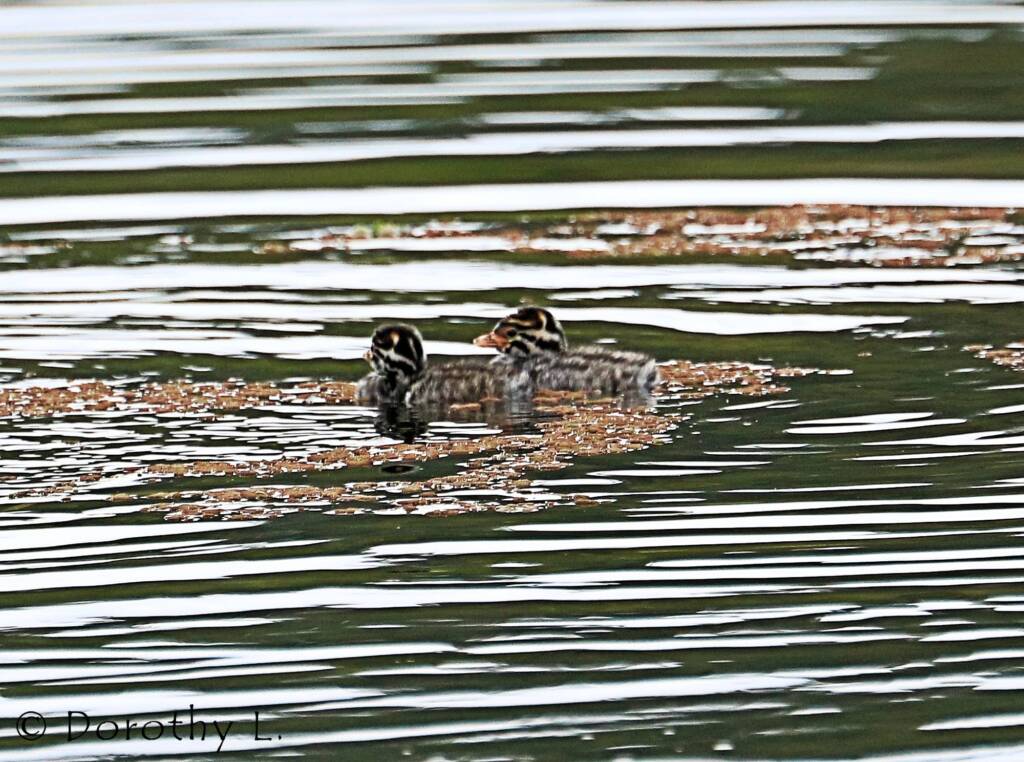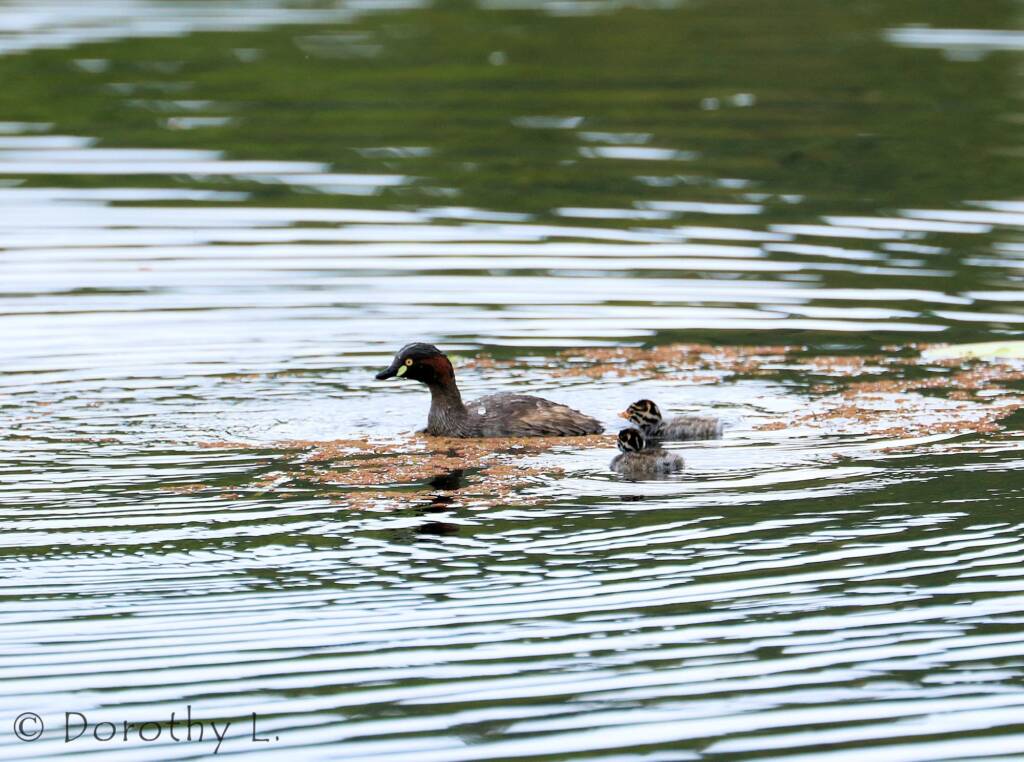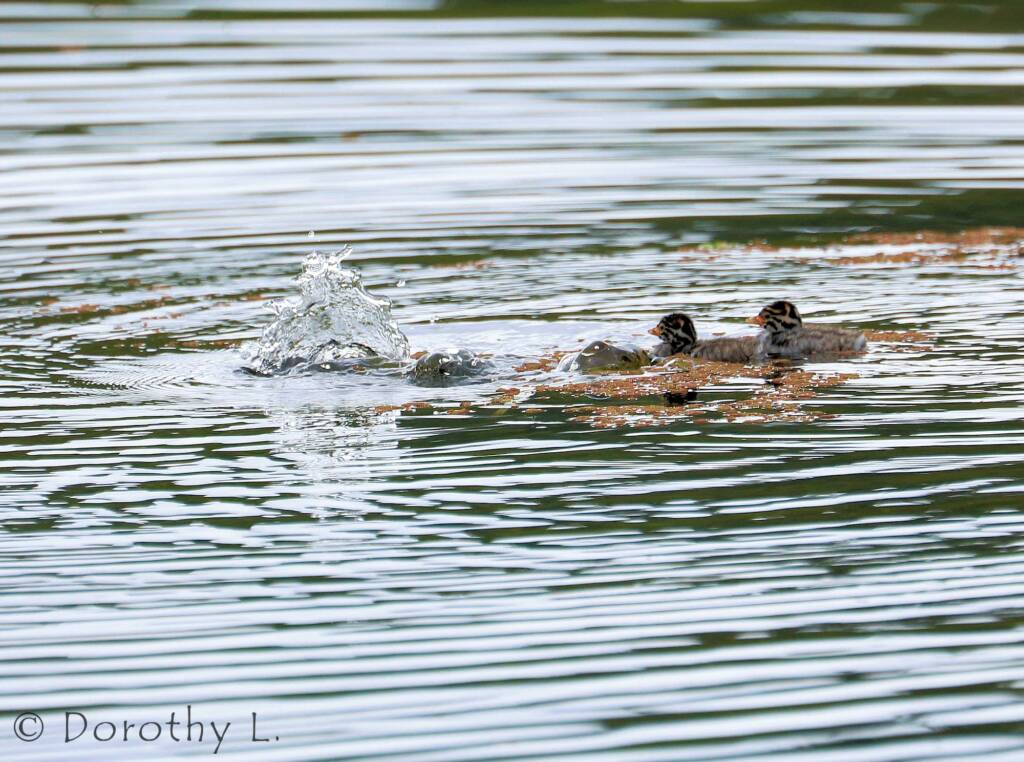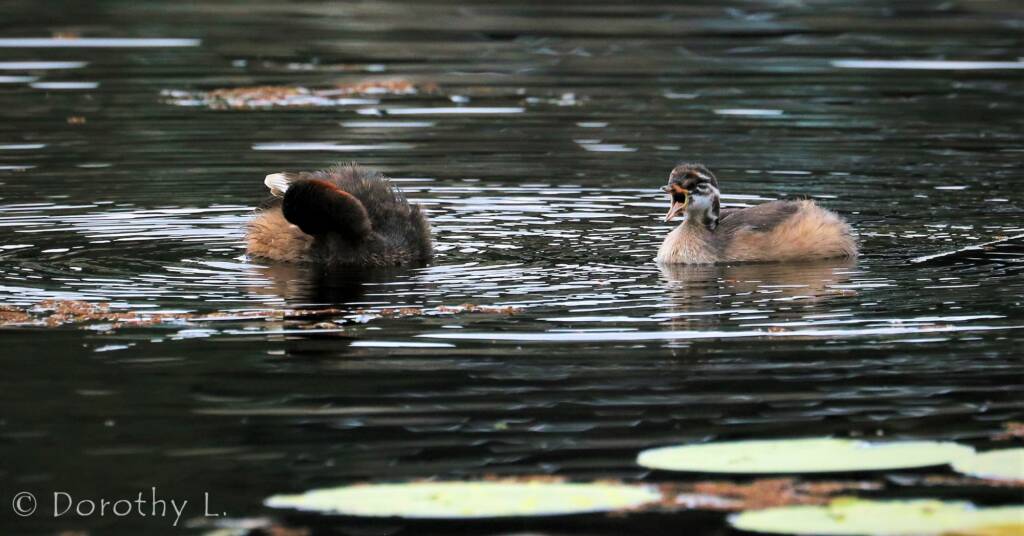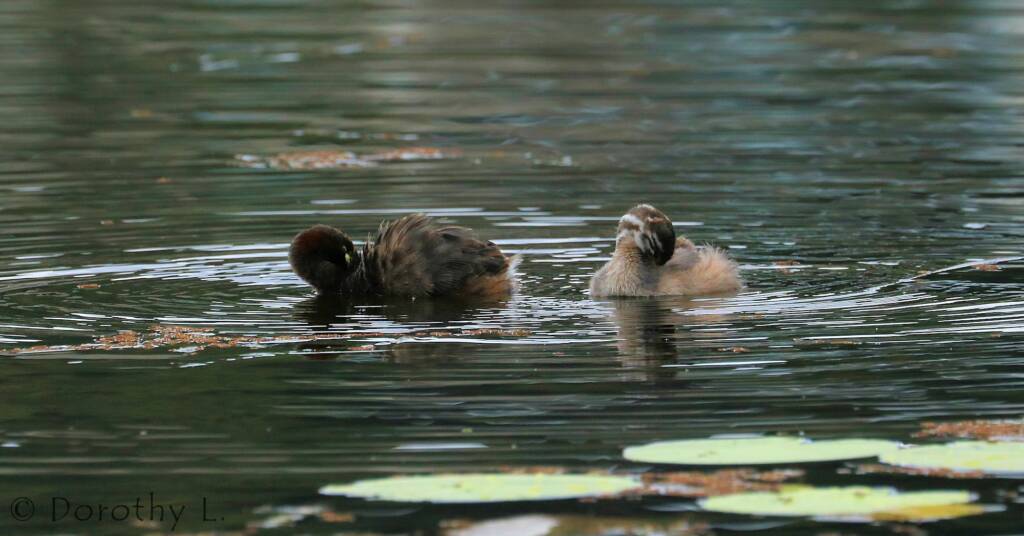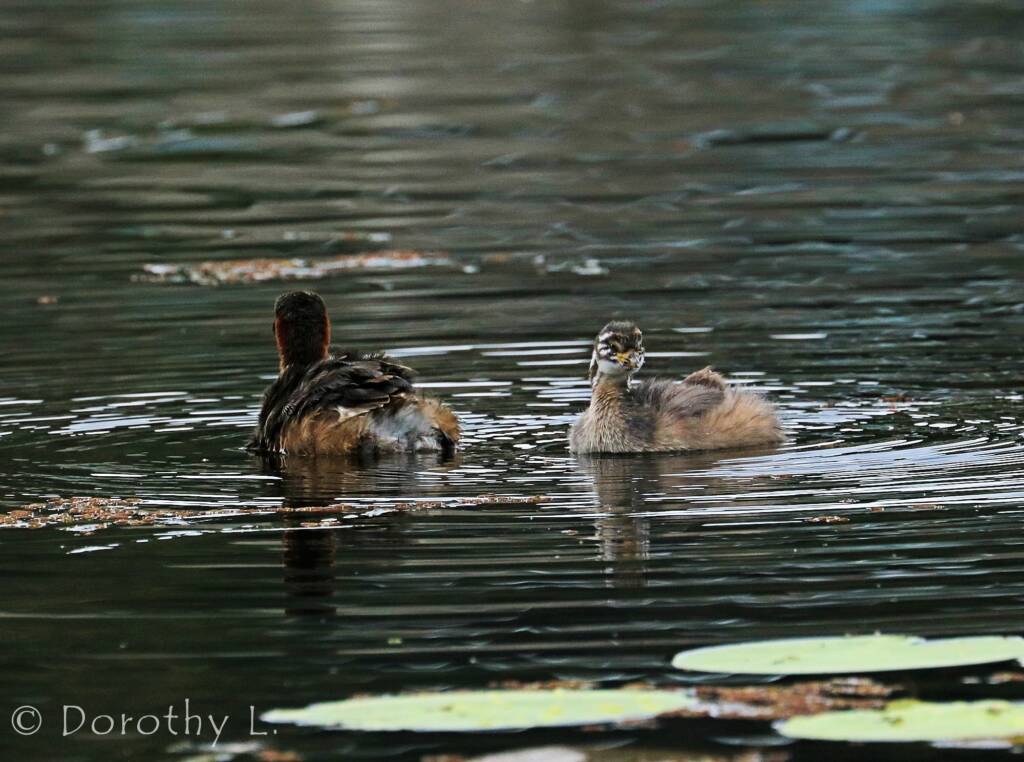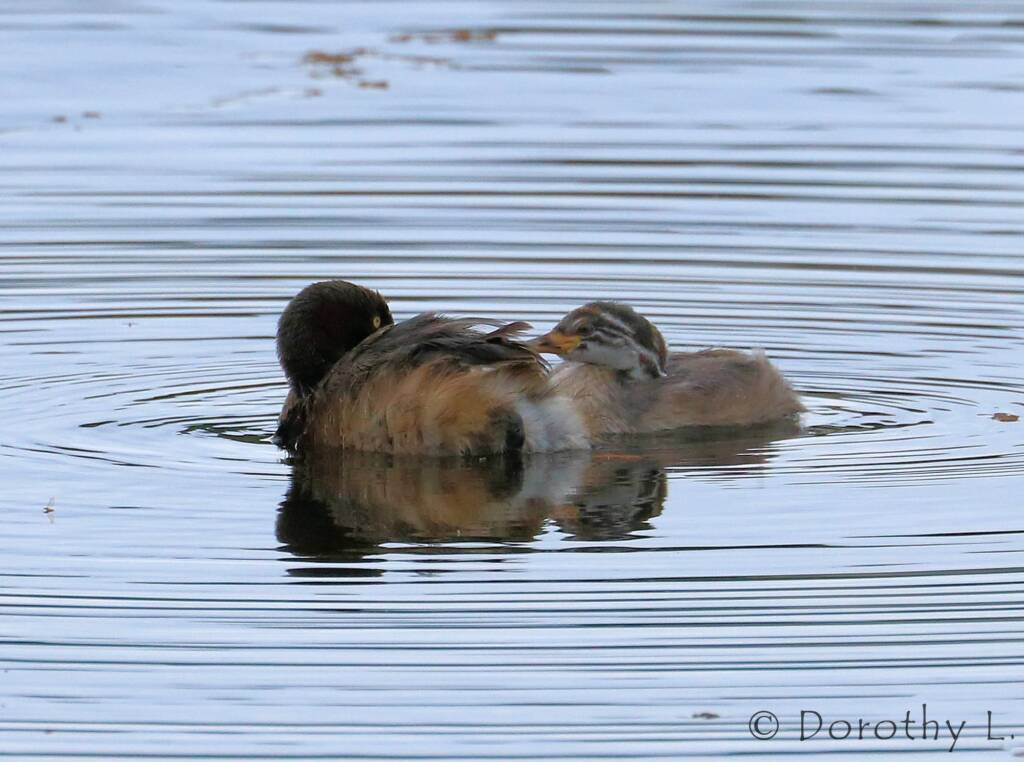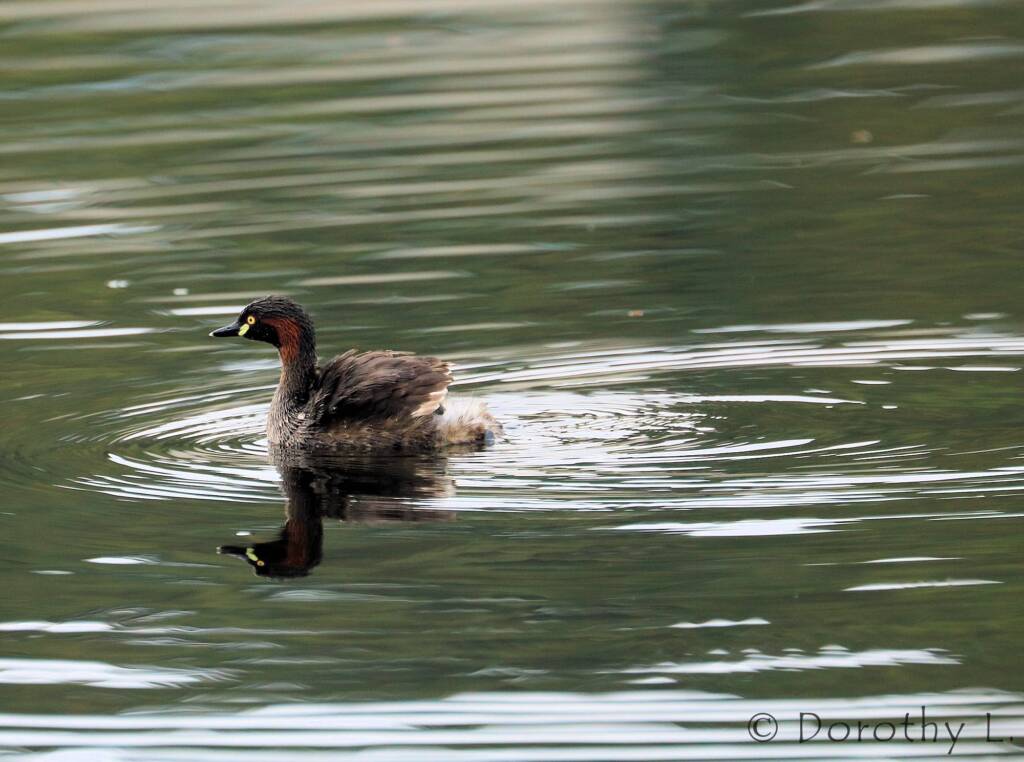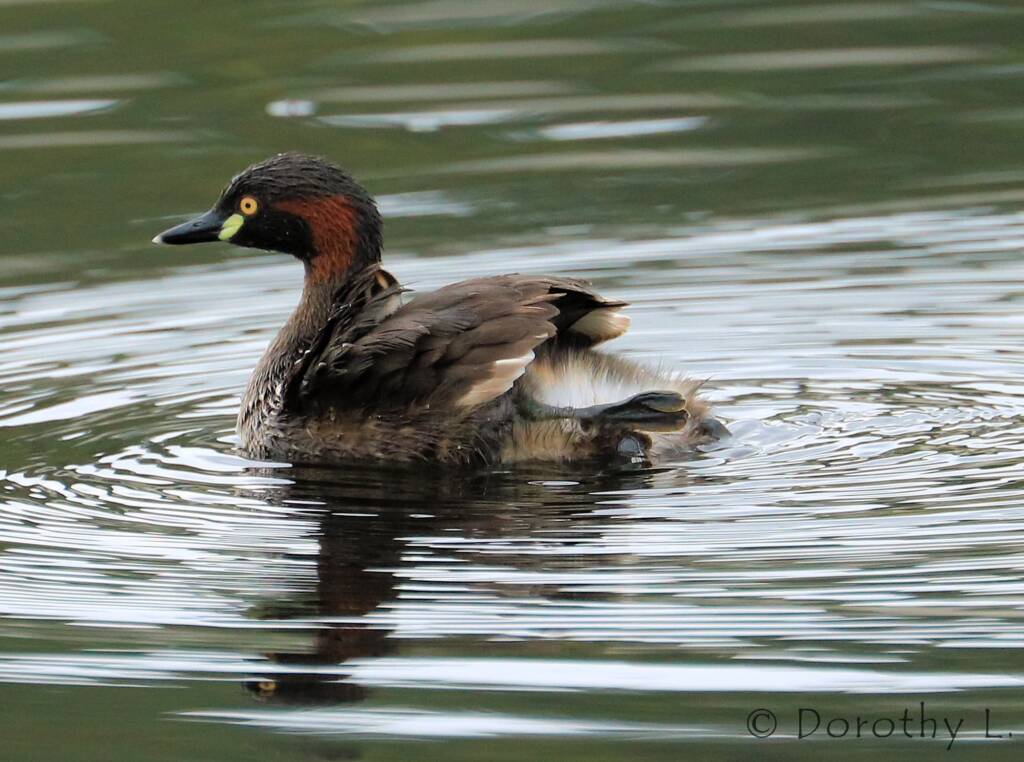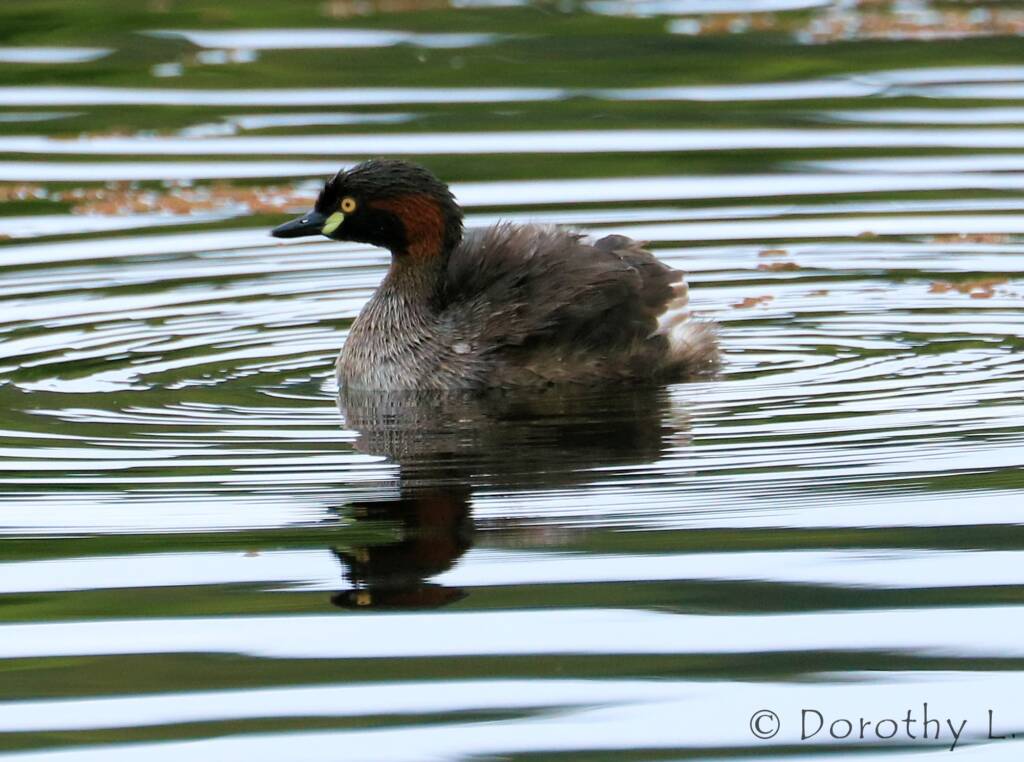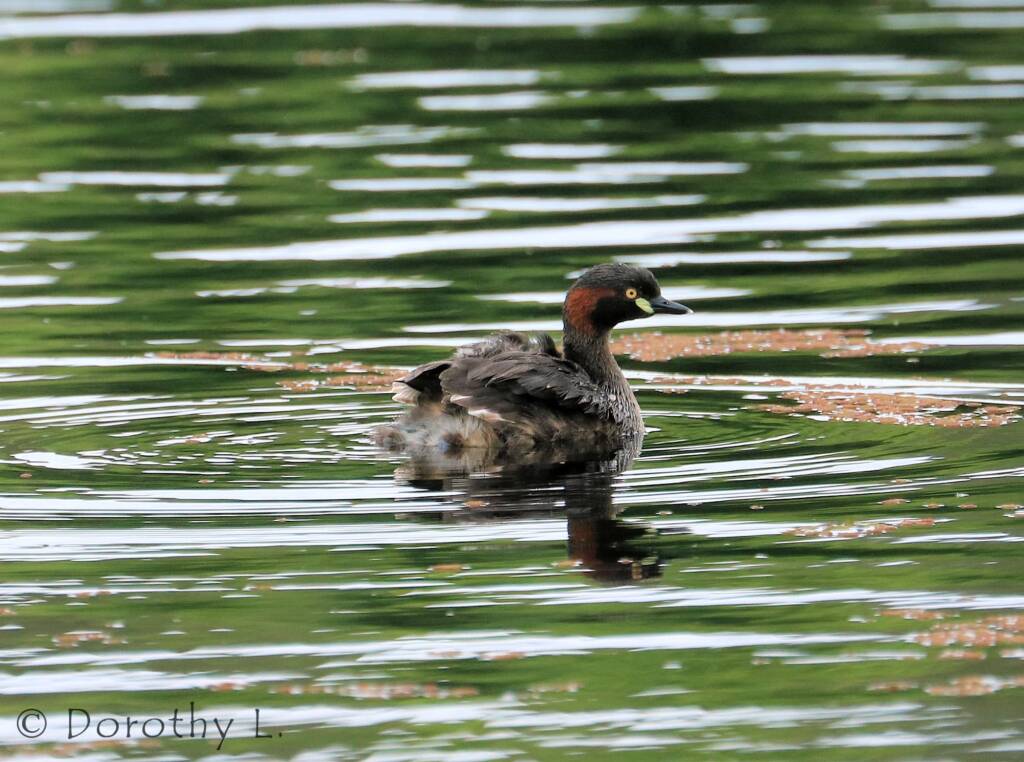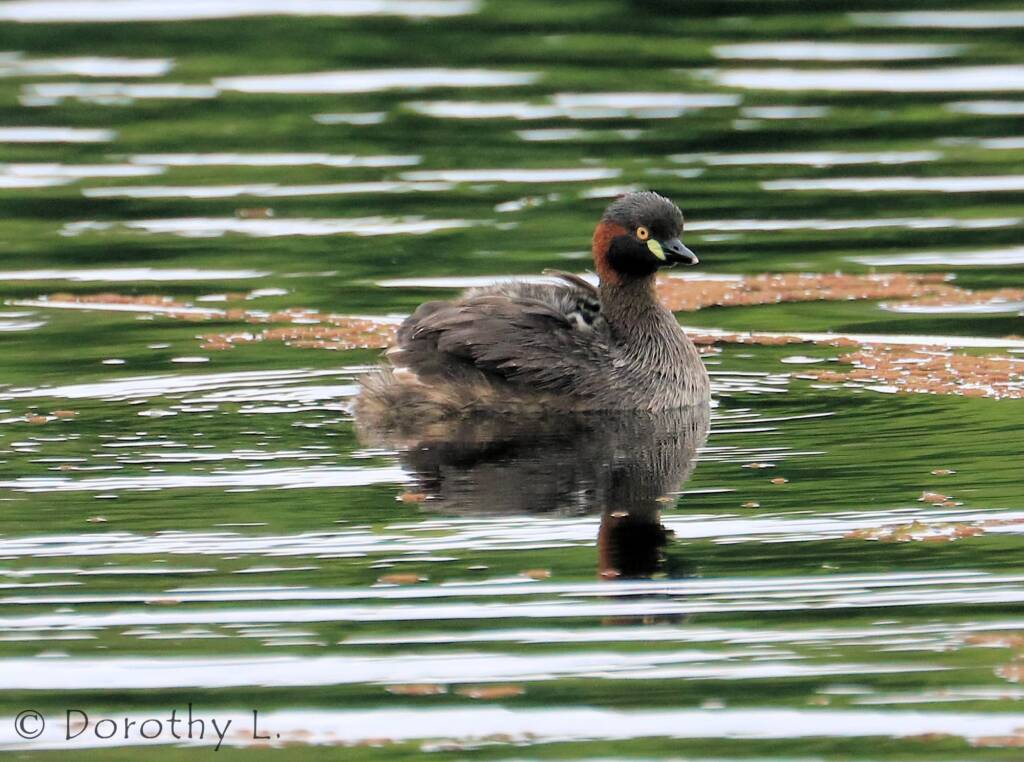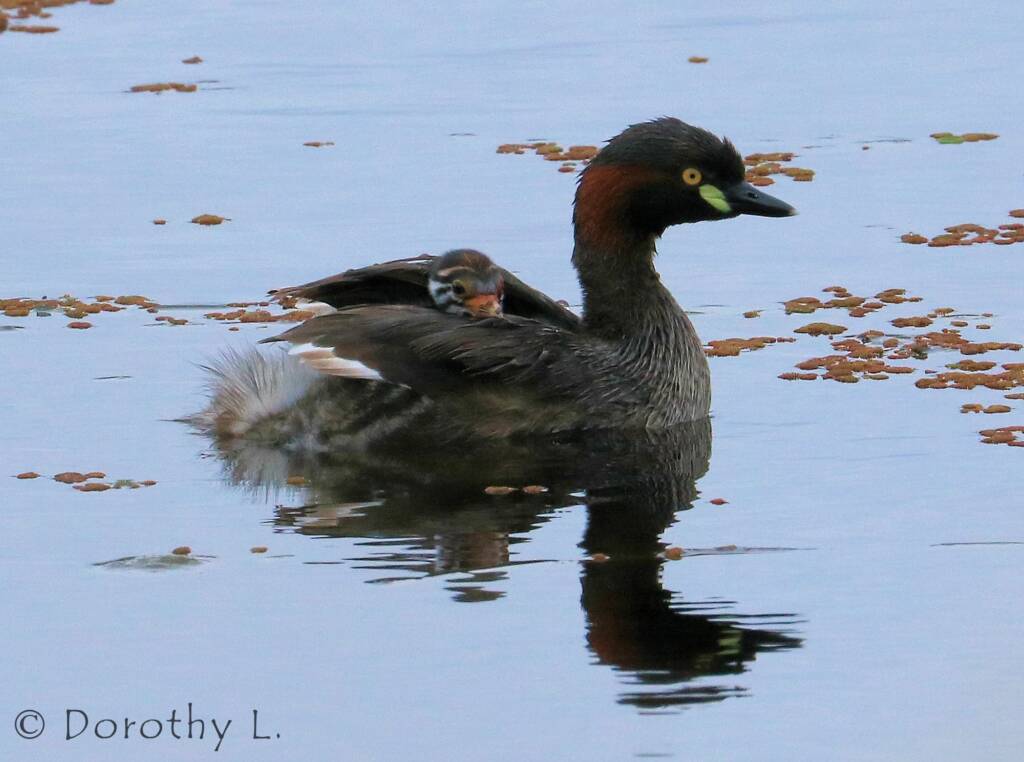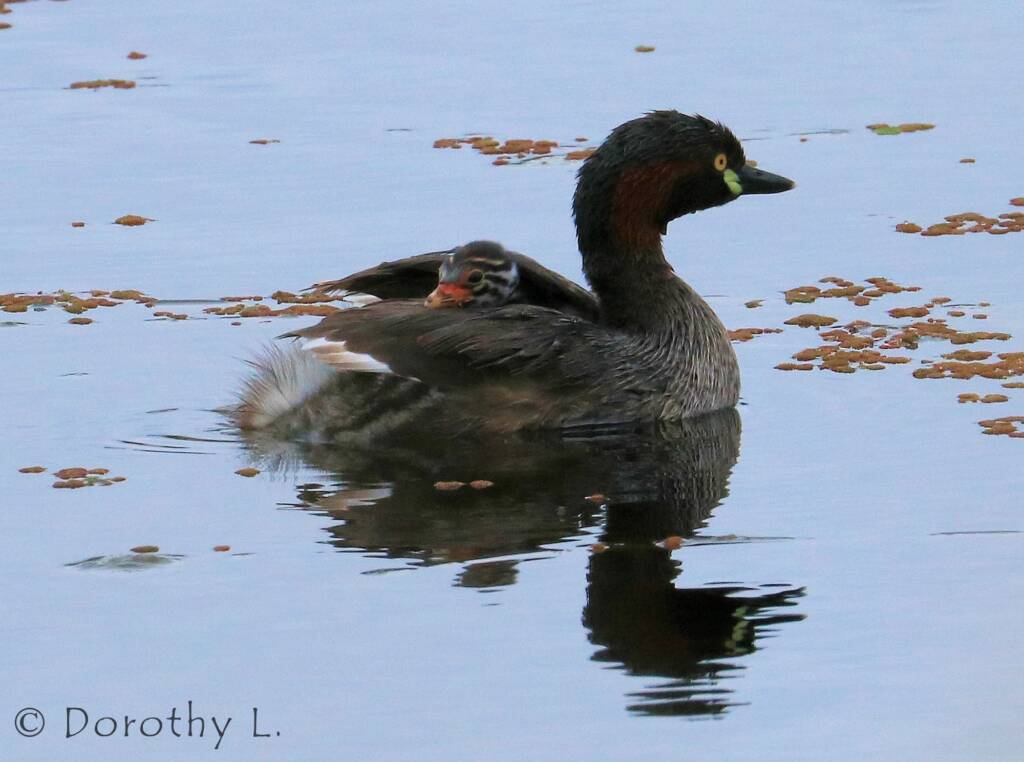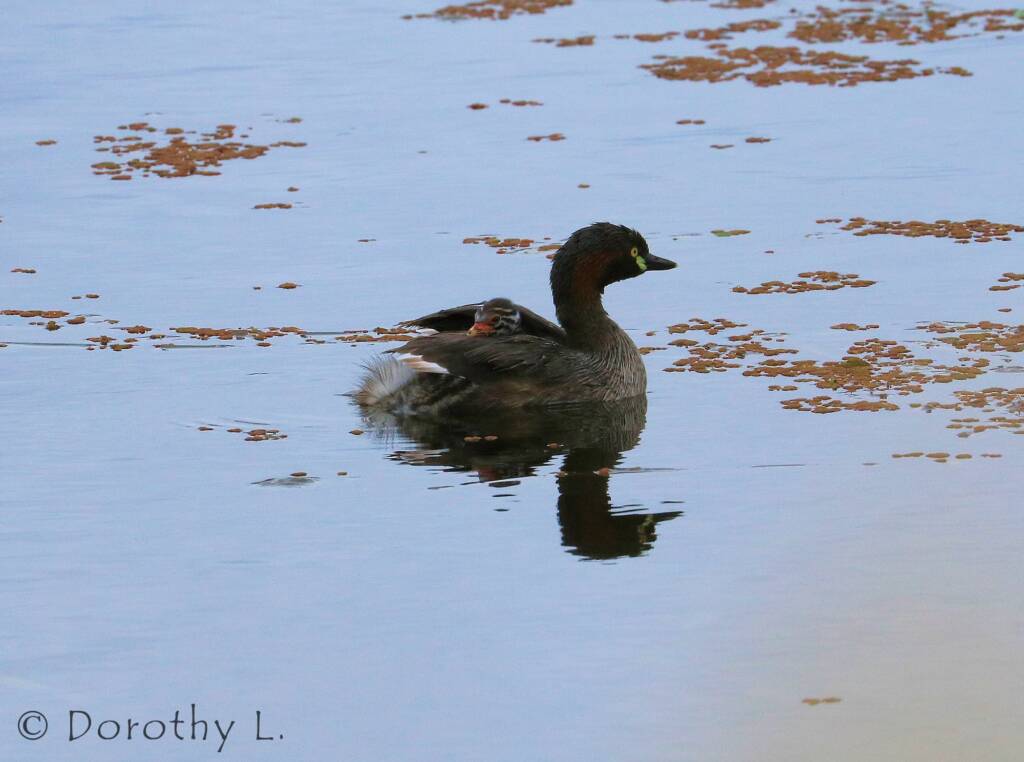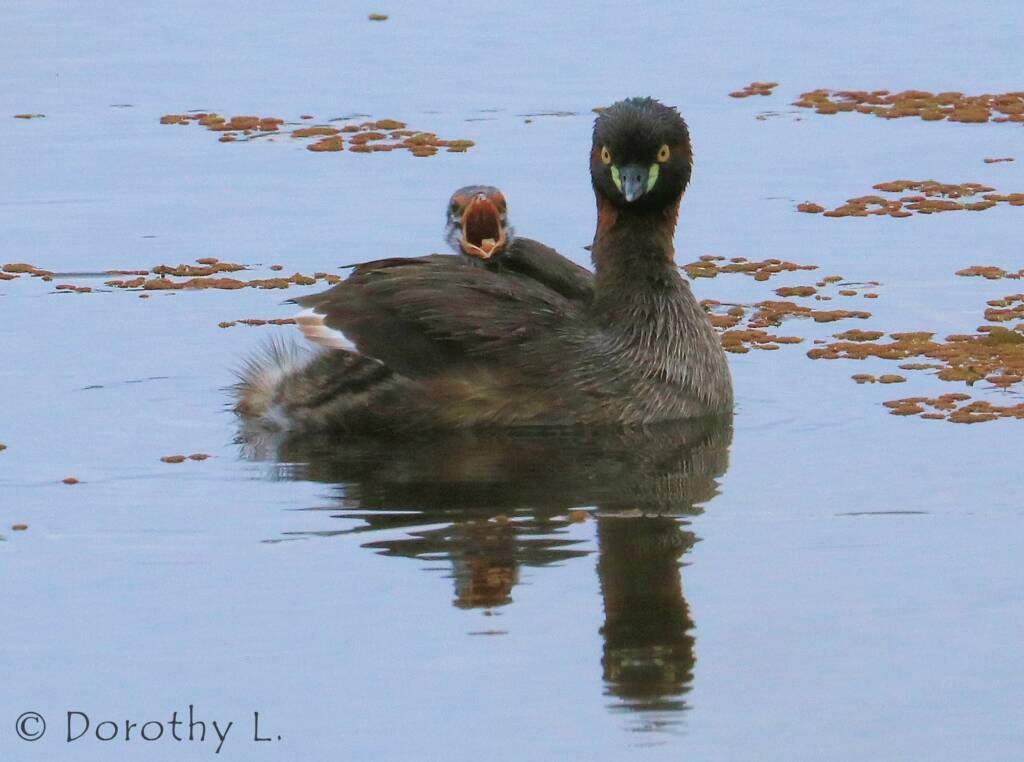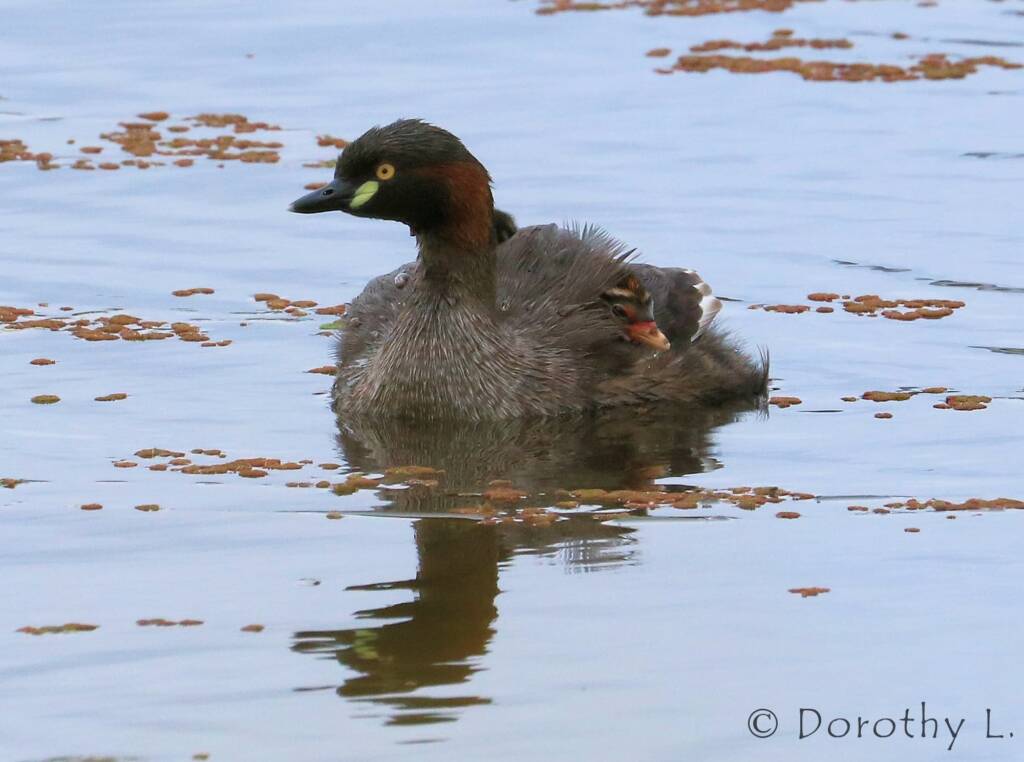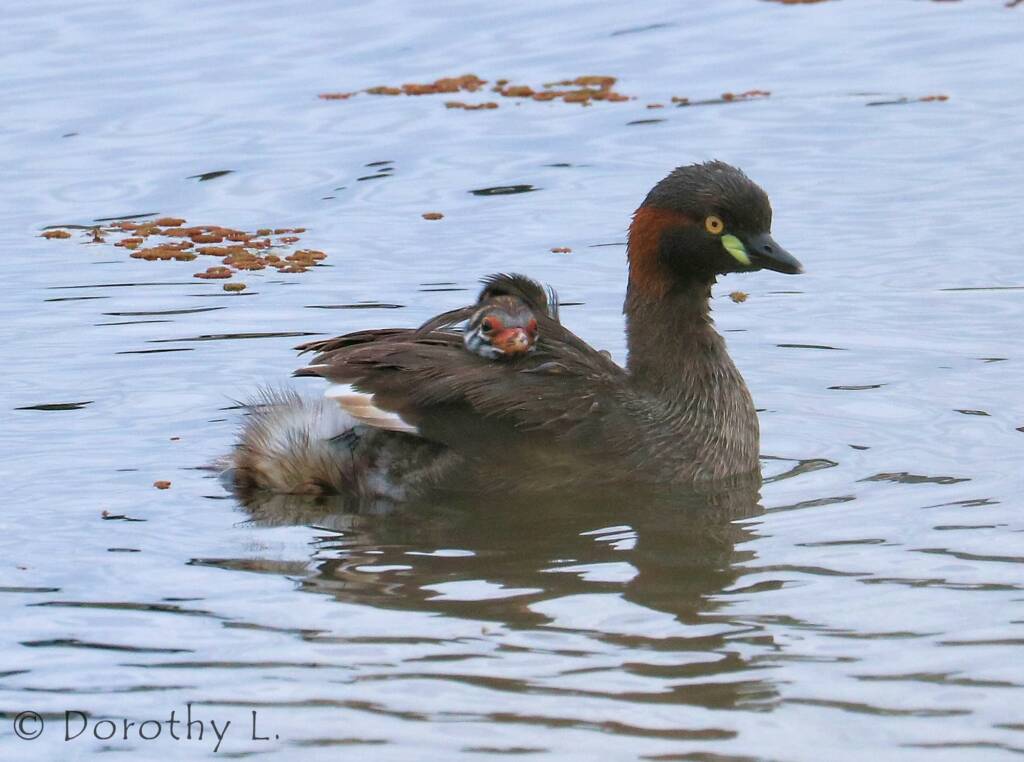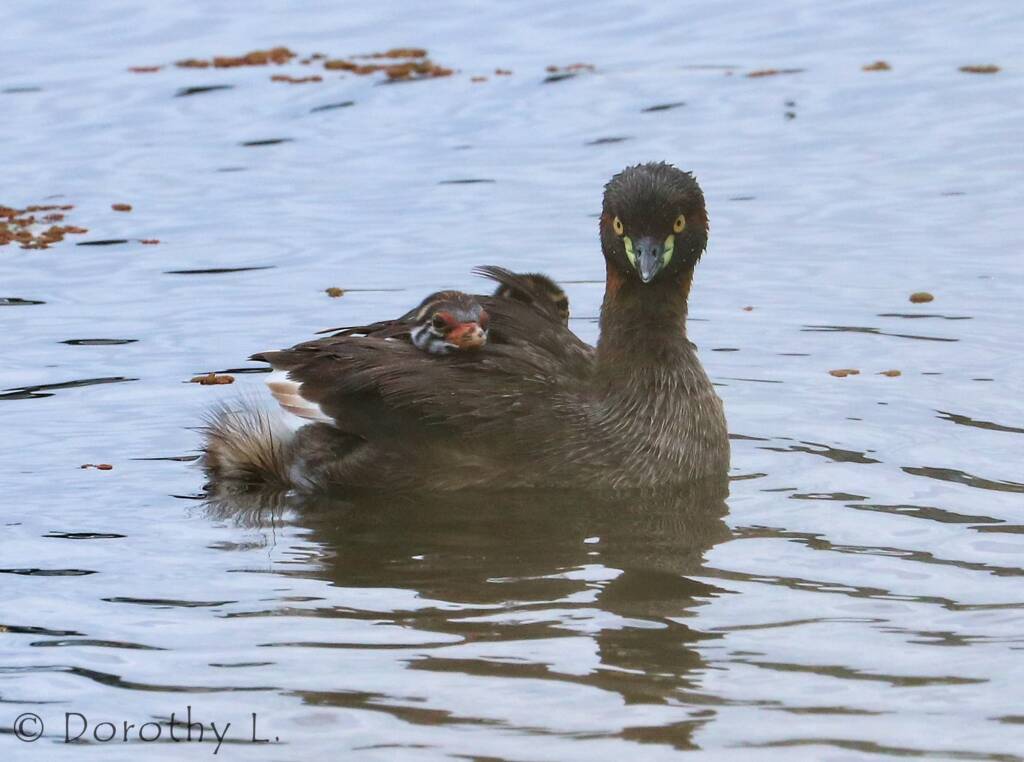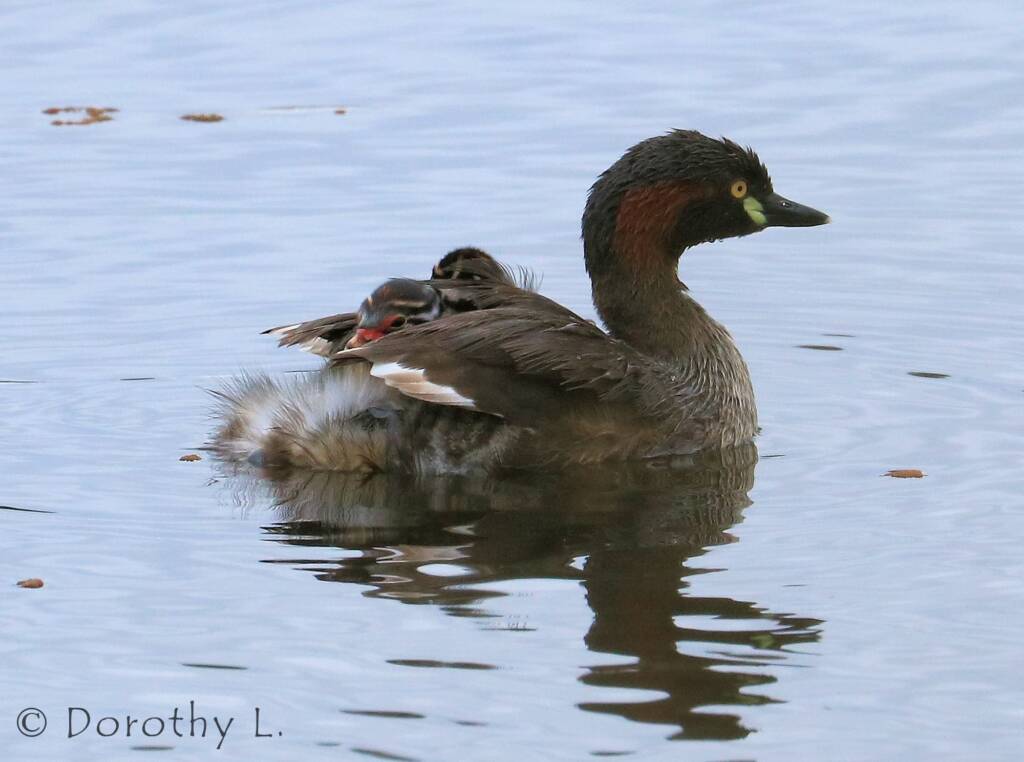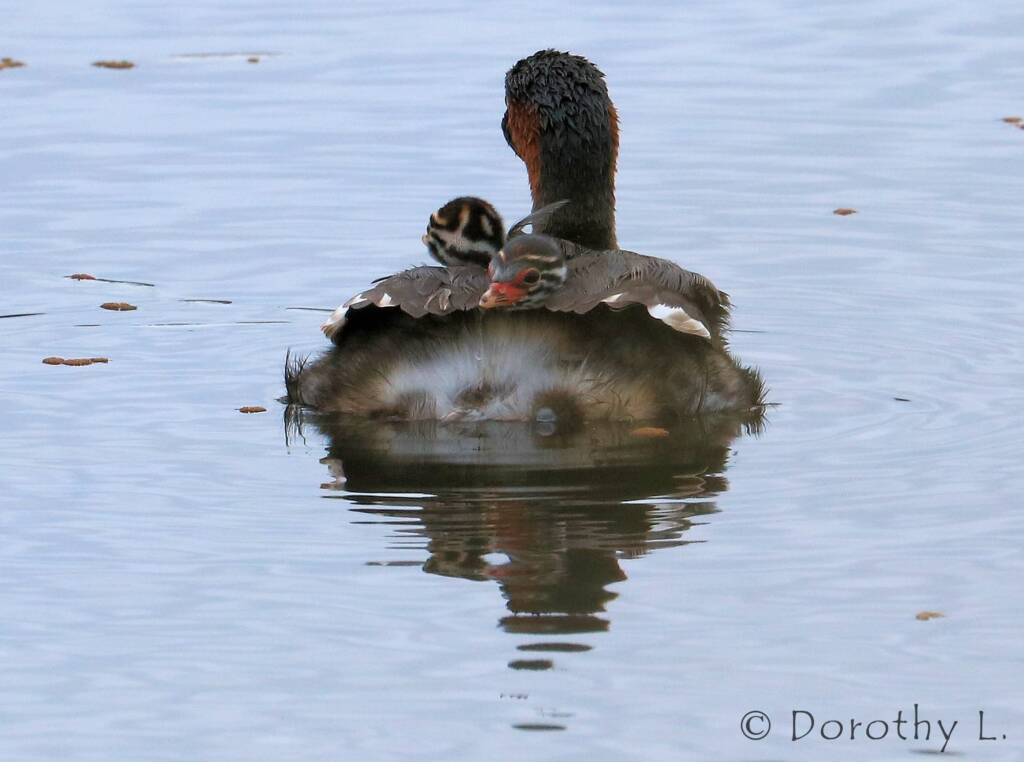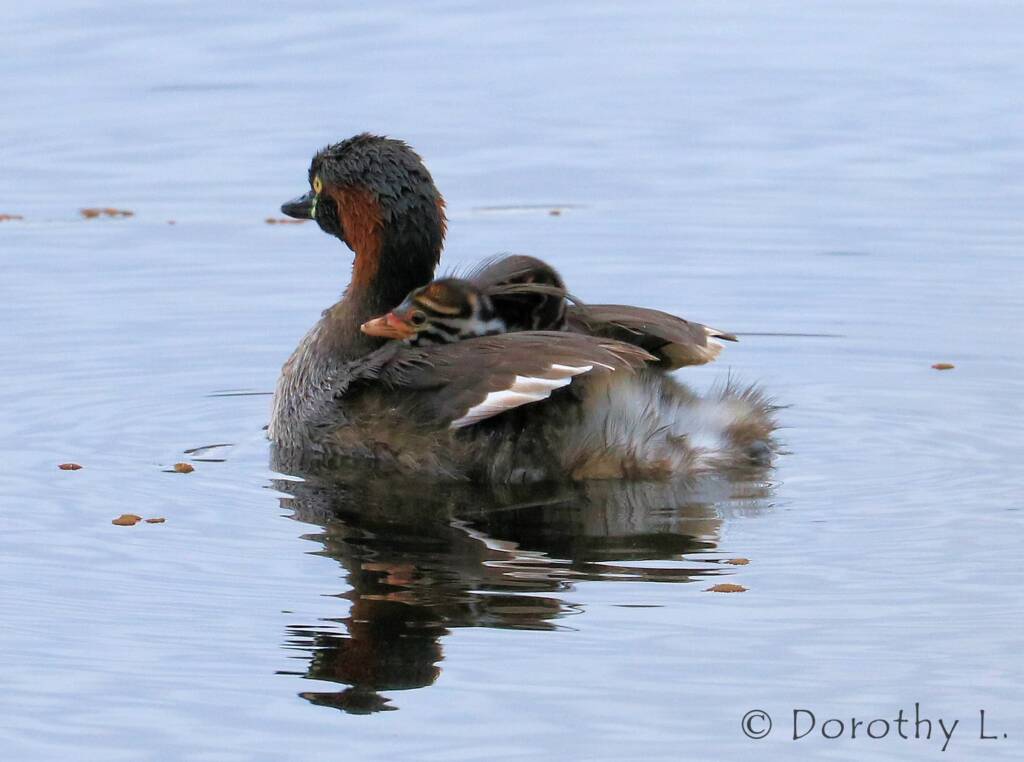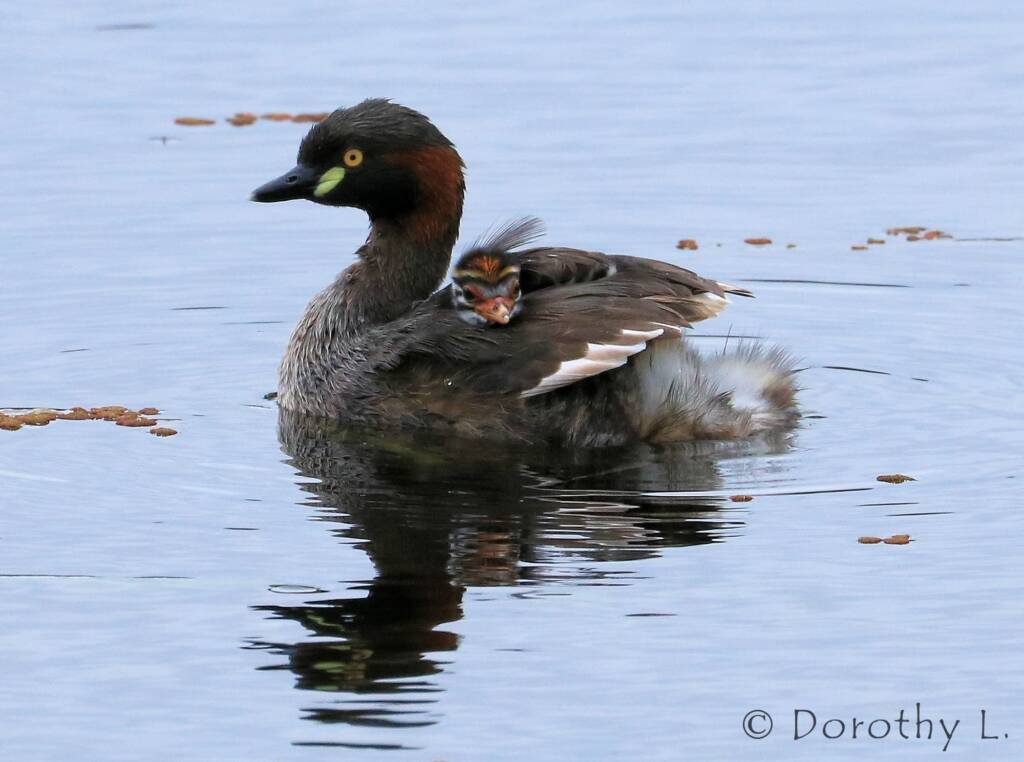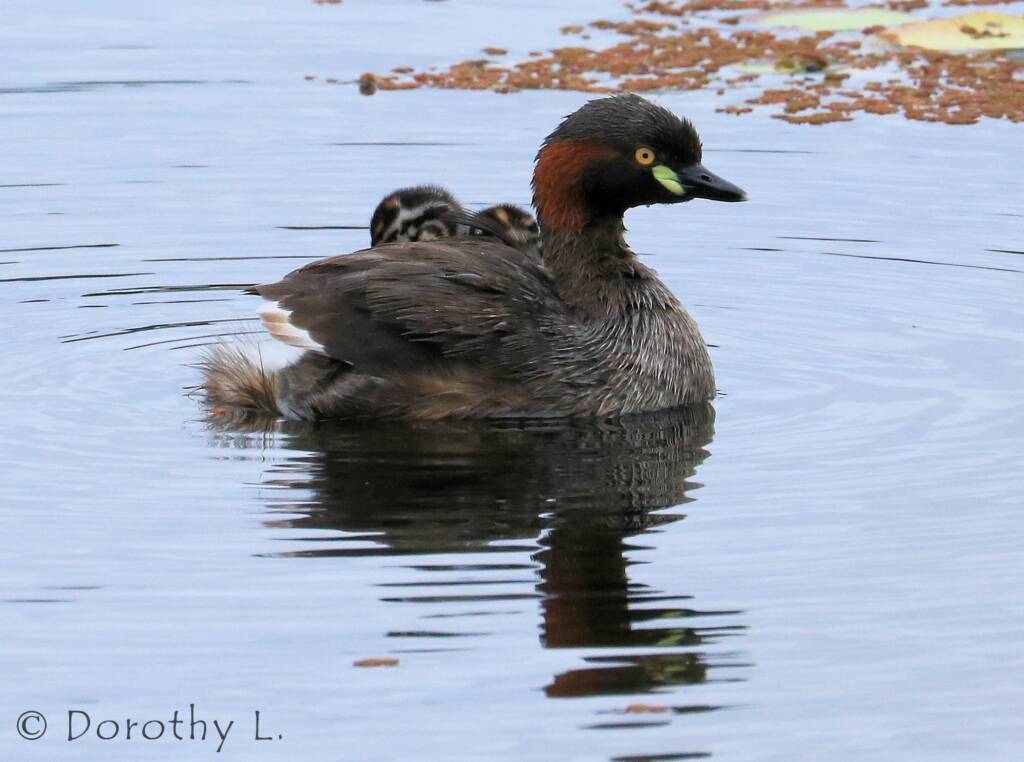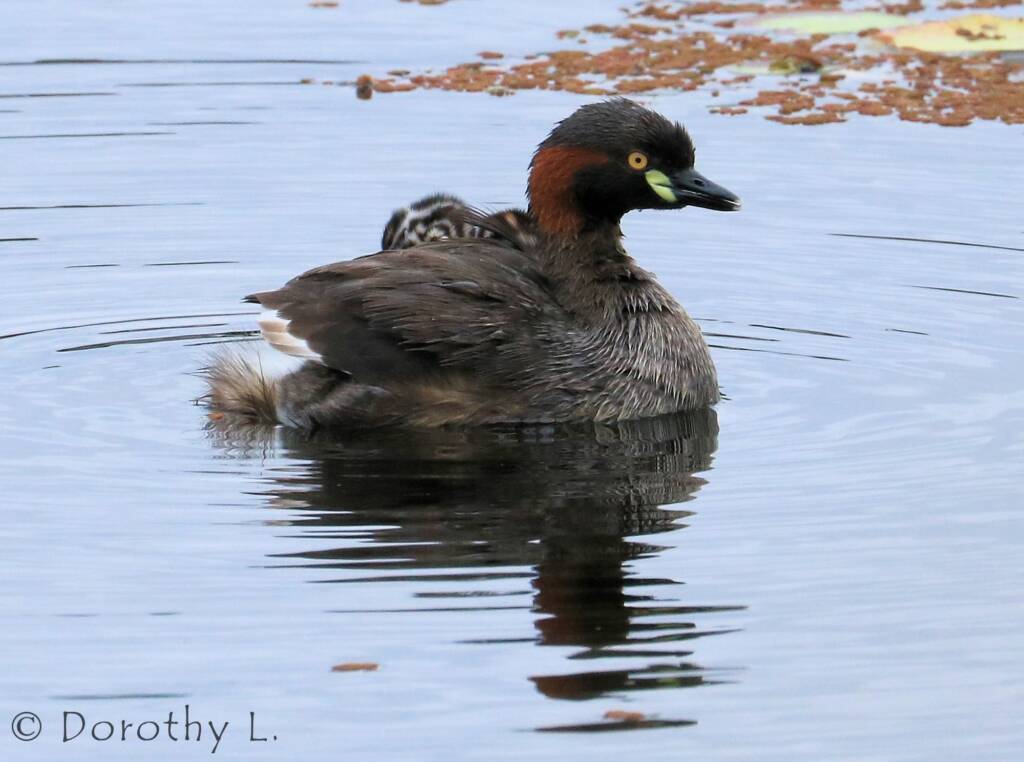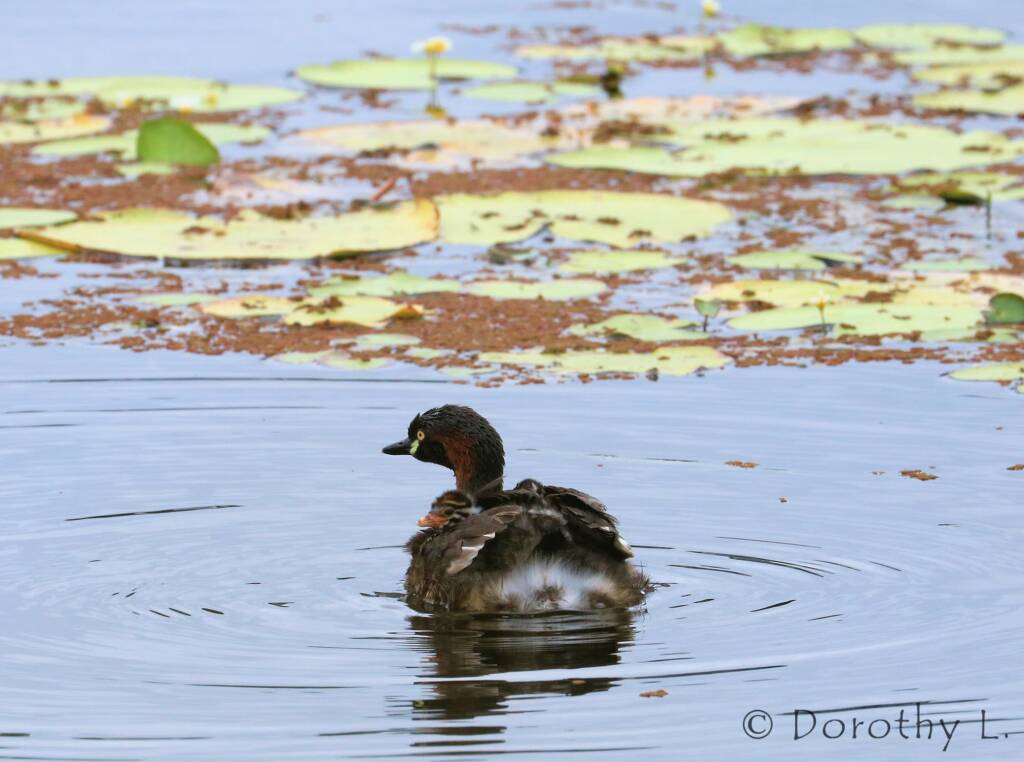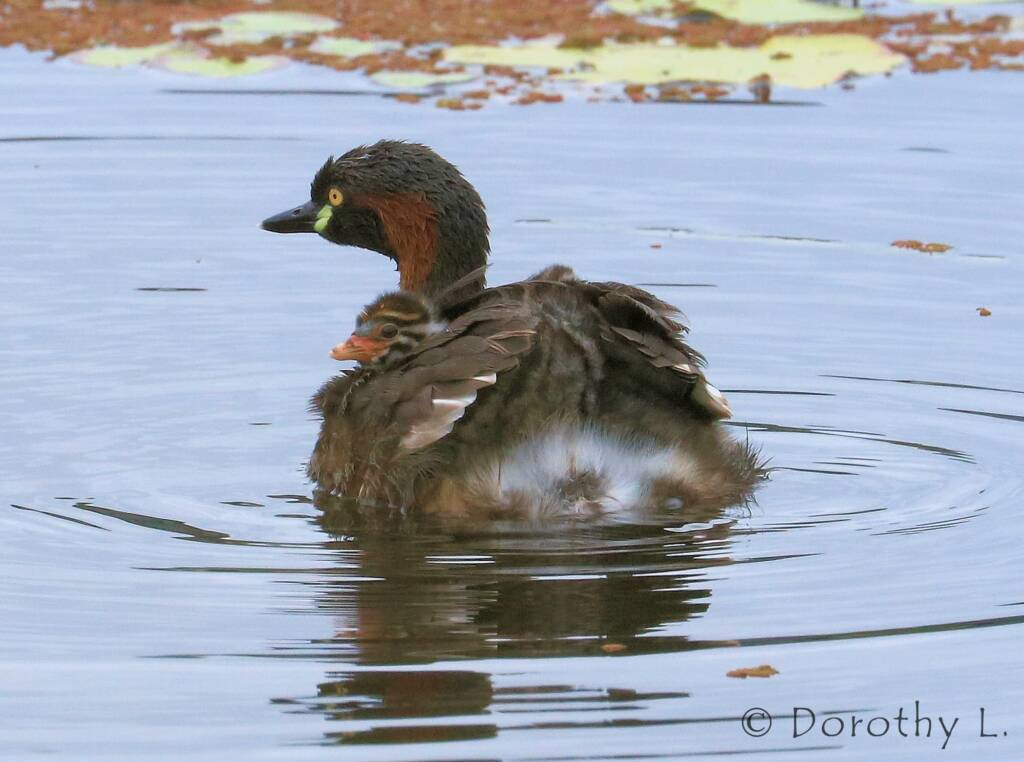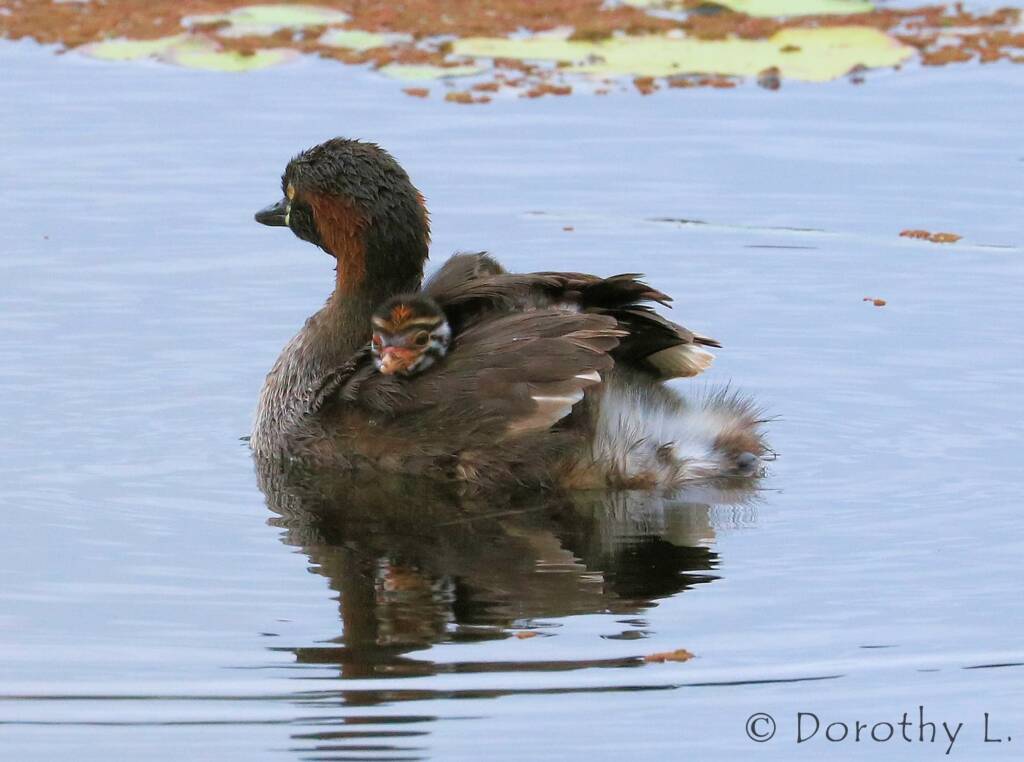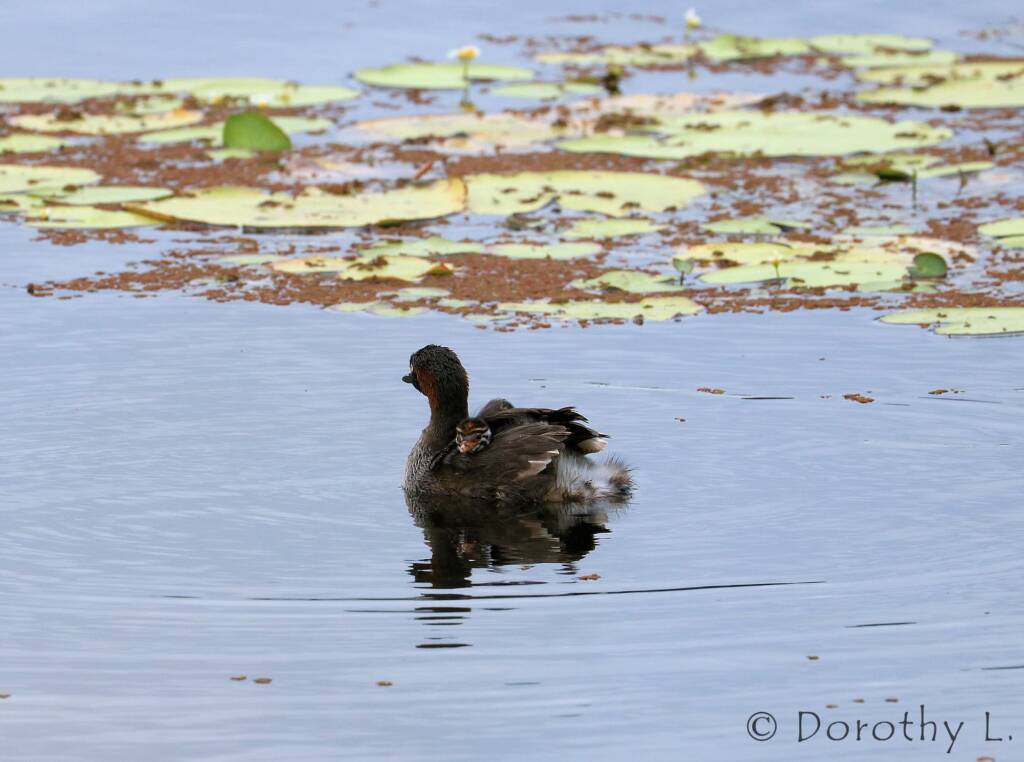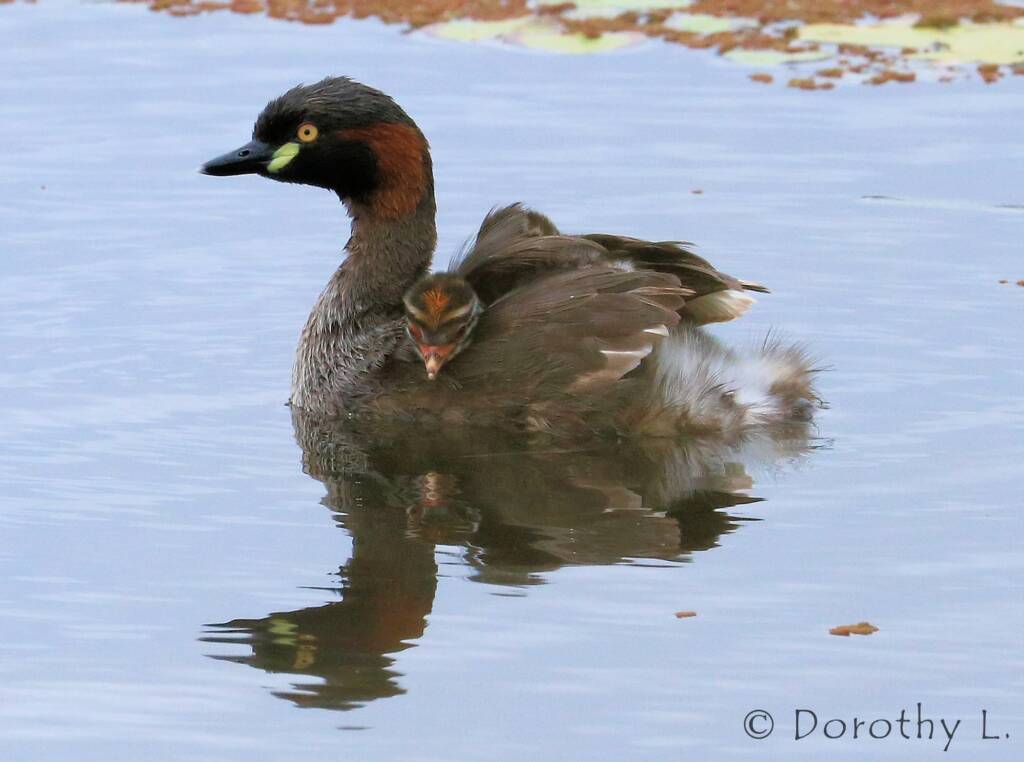Australasian GrebeAustralasian Grebe – Male Female
The Australasian Grebe (Tachybaptus novaehollandiae) is a freshwater bird and one of the smaller members of the grebe family that can often be sighted on small fresh waterways, lakes and rivers across Australia, New Zealand and some Pacific Islands. They seldom form large flocks.

The male Australasian Grebe are larger and longer billed to that of the female. The Australasian Grebe have two distinct plumage phases. During the non-breeding season, the plumage of sexes is dark grey-brown above and mostly silver-grey below, with a white oval patch of bare skin at the base of the bill. During the breeding season, both sexes have a dark glossy-black head, a rich chestnut stripe which extends from just behind the eye and down through to the base of the neck. The eye is a strong yellow and the patch of skin at the base of the gape (the fleshy area at the base of the bill where the upper and lower mandibles meet) becomes pale yellow.
I am not a duck, I am a grebe
Whilst many people call a grebe a duck, they are not ducks as there are a number of differences. One of the features of a grebe are the “lobed” toes (not webbed feet). Unlike a duck’s webbing, each toe of the grebe has skin resembling an airplane flap. The grebe pushes their feet to the very back of the body, with the toe flaps aiding its propulsion through the water (a handy feature for being propelled underwater and when in pursuit of prey).
Another feature of the grebe is their plumage. Like all aquatic birds, the plumage is waterproof and dense. In grebes however, each feather is attached to their skin at a right angle with a curl to the tip, which traps air against the body. This feature allows the grebe to adjust their buoyancy, providing them the ability to sink quickly and quietly beneath the water surface.
They feed mainly on small fish, water insects, freshwater molluscs, snails and crustaceans taken on the surface of the water and caught during underwater dives. The Australasian Grebe is often seen eating its own feathers and feeding them to its young, a behaviour seen in other species of grebe. This behaviour is thought to help prevent injury from any sharp fish bones that are swallowed.
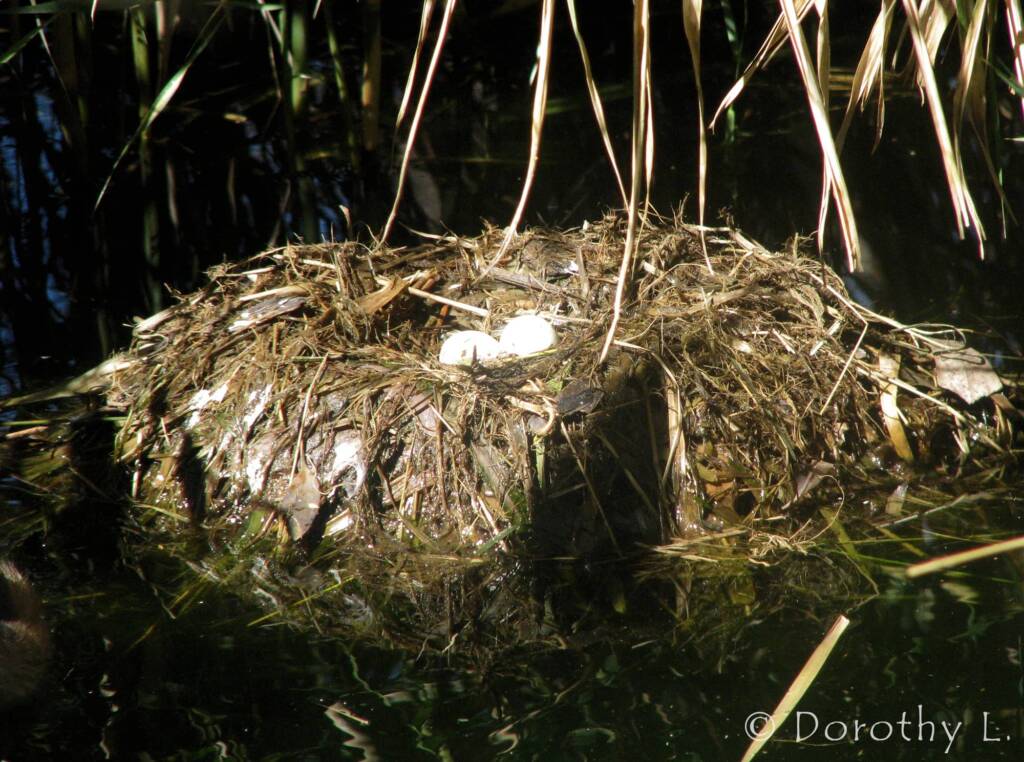
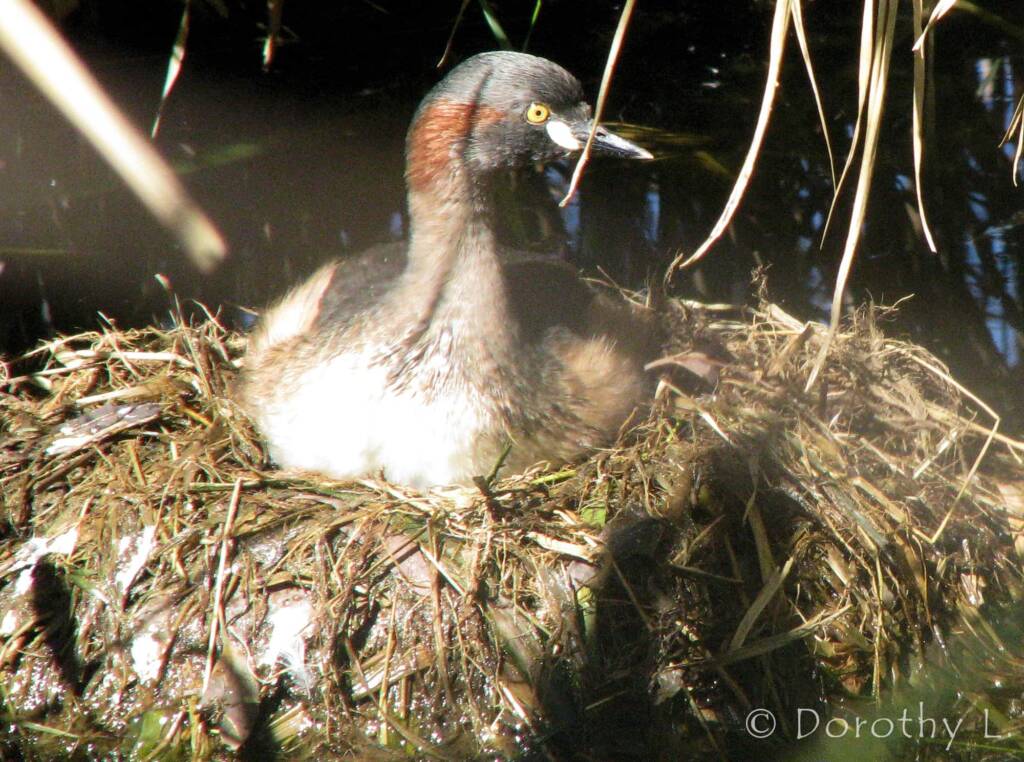

They build floating nests, made from aquatic vegetation in which they lay bluish to white eggs. After hatching, the young have striped down and can swim almost immediately, although they can often be seen getting around the water resting on the back of the swimming adult bird.
- Scientific classification
- Kingdom: Animalia
- Phylum: Chordata
- Class: Aves
- Order: Podicipediformes
- Family: Podicipedidae
- Genus: Tachybaptus
- Species: Tachybaptus novaehollandiae

Images © Dorothy L
Footnote & References
- Australasian Grebe, BirdLife Australia, https://birdlife.org.au/bird-profile/australasian-grebe
- I and the Bird: What is a Grebe? 22 August 2013, by Nate, 10,000 Birds, https://www.10000birds.com/i-and-the-bird-grebes.htm
- Australasian Grebe, Birds SA, https://birdssa.asn.au/birddirectory/australasian-grebe/
- Australasian grebe, https://en.wikipedia.org/wiki/Australasian_grebe (last visited Sept. 5, 2021).
- Australasian Grebe, www.mdahlem.net, https://mdahlem.net/birds/2/ausgrebe.php
Australasian GrebeAustralasian Grebe – Male Female
BirdsApostlebird Australasian Darter Australasian Figbird Australasian Gannet Australasian Grebe Australasian Pipit Australasian Robins Australasian Shoveler (Spatula rhynchotis) Australasian Wrens Australian Babblers Australian Bustard Australian Chats Australian Magpie Australian Pelican Australian Pratincole (Stiltia isabella) Australian White Ibis Bassian Thrush Black-faced Cormorant Black-faced Woodswallow Black Swan Bowerbirds Brolga Brown Songlark Channel-billed Cuckoo Cinnamon Quail-thrush Cormorants Cuckooshrikes and Allies Dotterels Lapwings Plovers Doves & Pigeons Emu Fairy Martin Finches Grey Fantail Grey Teal Honeyeaters Kingfishers Little Friarbird Little Grassbird Magpie-lark Masked Woodswallow Noisy Pitta Olive Whistler Paradise Riflebird Pardalotes Parrots Pheasant Coucal Pied Butcherbird Rainbow Bee-eater Raptors Rufous Fantail Redthroat Rufous Bristlebird Silver-crowned Friarbird Torresian Crow Waders Welcome Swallow (Hirundo neoxena) Whiskered Tern (Chlidonias hybrida) White-browed Woodswallow White Capped Noddy White-faced Heron White-necked Heron Willie Wagtail Yellow-throated Scrubwren


